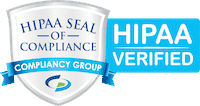How Claim Management Companies Can Enhance Their Practices
October 18, 2024
There is continual demand for insurers in today’s fast-paced insurance sector to maximize efficiency, provide outstanding customer service, and optimize their operations. A revolutionary new tool, RPA (Robotic Process Automation) simplifies processes, decreases human intervention, and boosts efficiency in claims software. This essay will go over the advantages, disadvantages, and best practices for using RPA, which is completely changing the claims processing industry.
Understanding Robotic Process Automation (RPA)
A technique known as Robotic Process Automation (RPA) employs “bots”—software robots—to automate routine, rule-based jobs that were previously carried out by people. To perform activities like data input, document processing, validation, and decision-making, these bots imitate human behaviors by interacting with digital systems, apps, and data sources.
How RPA Streamlines Workflows in Claims Software
In terms of claims software, RPA provides various advantages by automating time-consuming and error-prone jobs, streamlining procedures, and increasing overall efficiency:
Data Entry & Extraction
RPA bots may collect data from a variety of sources, including emails, PDFs, scanned documents, and online forms, and fill fields in claims management systems. This removes the need for human data input, decreases mistakes, and speeds up claims processing times.
Document Processing and Classification
RPA bots may evaluate and categorize documents such as claim forms, invoices, police reports, and medical records using specified rules and criteria. This allows insurers to route documents to the proper departments or staff for additional inspection or processing, reducing document processes and increasing accuracy.
Claim Triage and Routing
RPA bots may triage incoming claims based on established criteria such as claim type, severity, and complexity, and then automatically route them to the relevant adjusters or teams for processing. This guarantees that claims are handled quickly and allocated to the most competent individuals, resulting in better resource allocation and higher customer satisfaction.
Communication and notification
RPA bots may send automatic alerts, emails, or SMS messages to stakeholders like as policyholders, agents, and adjusters on the progress of their claims. This lowers the need for manual follow-ups, enhances communication, and keeps all parties informed about the claims process.
Fraud Detection and Compliance
RPA bots may do automated checks and validations to identify possible fraud or noncompliance with regulatory standards. By evaluating claims data against specified criteria and patterns, RPA assists insurers in detecting suspicious activity, mitigating risks, and ensuring compliance with industry laws.
The Benefits of RPA in Claims Software
Increased efficiency and productivity
By automating repetitive operations and decreasing human involvement, RPA allows insurers to process claims quicker, manage larger quantities of claims, and free up workers to concentrate on more strategic, high-value duties. This results in increased efficiency, productivity, and cost savings for insurers.
Improved accuracy and consistency
RPA bots do jobs with accuracy and consistency, removing the human mistakes and inconsistencies that come with manual processing. This leads to increased data accuracy, less rework, and better data quality throughout the claims process.
Quicker Time to Resolution
Automating essential components of the claims process, including data input, document processing, and claims routing, reduces time to resolution and allows insurers to deliver speedier service to policyholders. This increases client satisfaction and loyalty while decreasing the likelihood of claim leakage.
Scalability & Flexibility
Robotic Process Automation systems are extremely scalable and adaptable, enabling insurers to respond to changing business demands and variable claim levels. Whether dealing with seasonal surges in claims activity or expanding operations to accommodate corporate expansion, RPA can adapt to meet demand without disturbing operations.
Improved Compliance and Risk Management
RPA assists insurers in meeting regulatory standards and corporate regulations by ensuring uniform procedures and automating checks and validations. This lowers the risk of noncompliance fines, legal obligations, and reputational harm.
Challenges and Considerations
While RPA provides significant advantages for claims software, insurers must also consider the following problems and issues when using RPA solutions:
Process standardization
Before using Robotic Process Automation, insurers must standardize and improve their procedures to guarantee they are compatible with automation. To optimize RPA’s efficacy, current workflows may need to be re-engineered, explicit rules and criteria defined, and complicated procedures streamlined.
Data Quality and Integrity
RPA depends on precise and trustworthy data to carry out operations efficiently. To minimize mistakes, exceptions, and interruptions in automated processes, insurers must keep their data sources clean, organized, and up to date.
Change Management and Employee Engagement
Introducing RPA into the workplace may need cultural and organizational adjustments as people acclimate to working with automation technologies. To encourage acceptance and cooperation, insurers should invest in change management efforts, training programs, and employee engagement techniques.
Security & Compliance
Insurers must verify that RPA solutions adhere to data security standards, privacy rules, and industry-specific guidelines. This involves putting in place strong access restrictions, encryption mechanisms, and audit trails to secure sensitive data and reduce security threats.
Maintenance and monitoring
RPA bots need constant maintenance, monitoring, and upgrades to guarantee peak performance and dependability. Insurers must implement governance structures, monitoring tools, and escalation processes to manage concerns, resolve exceptions, and ensure long-term compliance.
Best Practices for Implementing RPA in Claims Software
Start with a pilot project
Begin by conducting a small-scale pilot study to determine the feasibility, advantages, and difficulties of using RPA in claims processing. Choose a use case with specific goals, quantifiable outputs, and a controllable scope to show automation’s value to stakeholders.
Collaborate across departments
Involve stakeholders from several departments, such as claims, IT, operations, and compliance, in the robotic process automation deployment process. Encourage cooperation, communication, and alignment to ensure that automation activities are consistent with corporate goals and objectives.
Prioritize process optimization
Before automating a process, examine and improve it to remove inefficiencies, redundancies, and bottlenecks. Standardize procedures, establish explicit rules and criteria, and record best practices to enable automation and optimize ROI.
Invest in training and support
Provide thorough training and assistance to personnel affected by RPA to guarantee the effective adoption and use of automation technologies. Provide hands-on training, seminars, and tutorials to increase RPA skills, confidence, and excitement within the business.
Monitor performance and calculate ROI
Create key performance indicators (KPIs) and metrics to track the success, efficacy, and ROI of RPA efforts. Monitor indicators like as processing times, mistake rates, cost savings, and customer satisfaction to assess automation’s influence on business results.
Conclusion
Robotic Process Automation (RPA) is transforming claims processing in the insurance business, providing insurers with a strong tool to optimize processes, decrease human effort, and increase productivity. RPA helps insurers speed up claims processing, improve data quality, and increase customer happiness by automating repetitive jobs, streamlining procedures, and enhancing efficiency.
In conclusion, as insurers manage the complexity of claims processing software in an increasingly digital environment, RPA provides an opportunity to revolutionize operations, promote innovation, and provide improved policyholder experiences. Insurers may position themselves for success in a constantly changing market environment by embracing RPA and implementing best practices.
7 Features Every Online Claim Management System Needs
June 27, 2024What to Look for in Claims Management Software?
May 8, 2024









